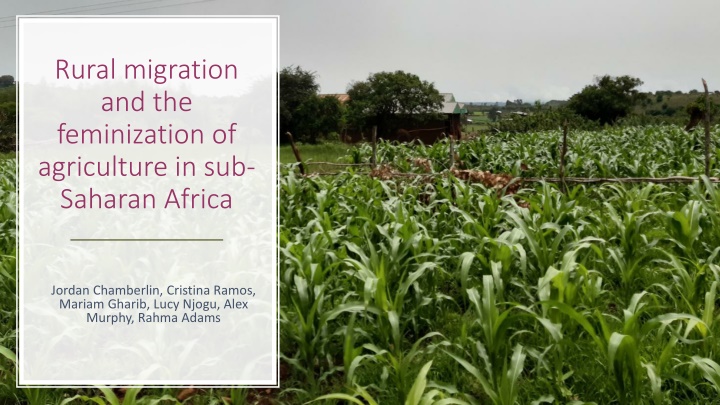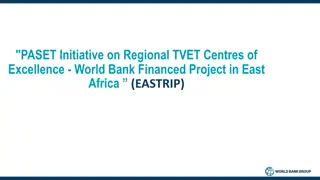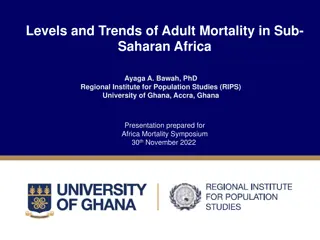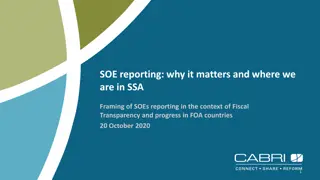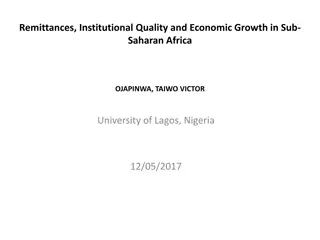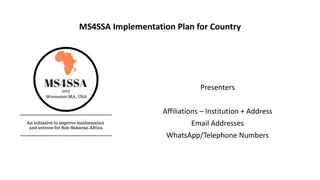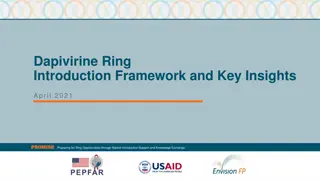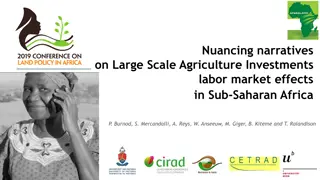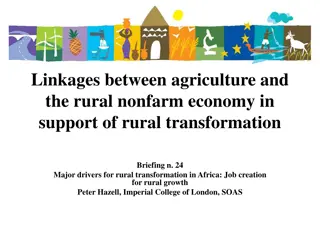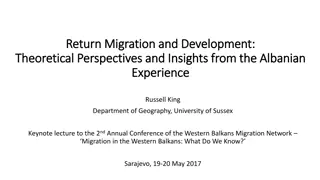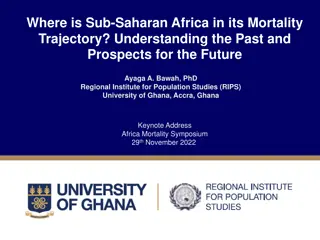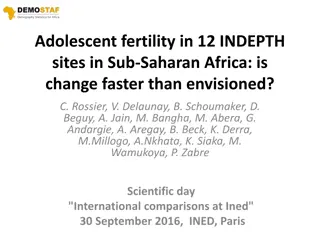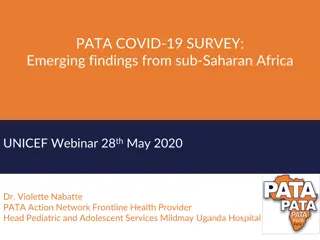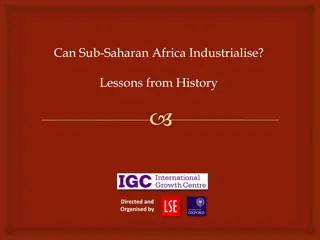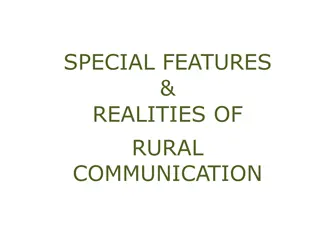Rural Migration and the Feminization of Agriculture in sub-Saharan Africa
This study examines the impact of rural migration on agriculture in sub-Saharan Africa, with a focus on the increasing role of women in agricultural activities. The authors analyze the dynamics of migration and its implications for the agricultural sector, shedding light on the challenges and opportunities faced by female farmers in the region. Through a comprehensive analysis of the feminization of agriculture, the research provides valuable insights into the evolving agricultural landscape of sub-Saharan Africa.
Download Presentation

Please find below an Image/Link to download the presentation.
The content on the website is provided AS IS for your information and personal use only. It may not be sold, licensed, or shared on other websites without obtaining consent from the author.If you encounter any issues during the download, it is possible that the publisher has removed the file from their server.
You are allowed to download the files provided on this website for personal or commercial use, subject to the condition that they are used lawfully. All files are the property of their respective owners.
The content on the website is provided AS IS for your information and personal use only. It may not be sold, licensed, or shared on other websites without obtaining consent from the author.
E N D
Presentation Transcript
Rural migration and the feminization of agriculture in sub- Saharan Africa Jordan Chamberlin, Cristina Ramos, Mariam Gharib, Lucy Njogu, Alex Murphy, Rahma Adams
Rural migration in Sub-Saharan Africa - Dominated by young people, especially young men - Rural to rural still more common, but many more types - Main reasons: land shortage and lack of economic opportunities - Gendered patterns The feminization of agriculture in Sub-Saharan Africa - Palacios-Lopez et al (2017): avg. labor share of women in crop production at 40%, great variation: around 50% in Tanzania, Malawi and Uganda, 37% in Nigeria, 29% in Ethiopia - Gender roles and activities of women in ag differ greatly across countries - Rural out-migration affects HH dynamics and women s roles but still much unknown Background Does rural migration vary by area of origin in terms of remoteness? How are different types of migration shaped by gender, age and financial resources? How do HHs reallocate labor and agricultural management when someone migrates? Do reallocations differ by type of migration and by gender of migrant? Does rural migration lead to an increased participation and decision-making of women in ag? Research Questions
Methodology: Mixed-Methods Quantitative analysis LSMS-ISA household survey data 1. Descriptive analysis of HH data Ethiopia, Nigeria, Tanzania, Uganda, Zambia 2. Econometric analysis of determinants of migration and labor allocation Ethiopia, Tanzania, Zambia Qualitative analysis Data collection in Ethiopia and Tanzania 1. Interviews with women from sending HHs 2. Key Informants 3. Focus group discussions 4. Interviews with migrants Two sites in each country chosen in terms of remoteness
Key findings Defining migration is a challenge Male heads involved in seasonal migration Many types of temporary migration: seasonal, for a few days a week, for several months or husbands who just leave... Increased labor burden on women but not always increase in decision-making power or control over income Exit/out-migration rates peak in early 20s, but magnitude and gendered share of flows depend on migration definition Many women consider they do not have the knowledge to make decisions over ag. or do not want to be in charge Most migrants are male BUT conditional on definition Young women also migrating from rural areas for work Spatial patterns: Negative consequences of migration: Out-migration largest in higher-access areas Failure to farm on time, theft of crops, burden on women Rural destinations relatively more prevalent in lower-access areas Failed migration is common increased financial burdens Urban destinations more likely for men TZ and ET very different in how women respond to migration: More optimistic and confident in their farming abilities in TZ Migration of young people aging and feminization of agriculture? Zambia
Questions/concerns for discussion How can we better talk about the impact of migration (in general) on women when there are so many different types of migration? Exit/out-migration rates peak in early 20s, but magnitude of flows depends on how defined (Zambia) Out-migration imperfectly observed in HH survey data: Distinguishing migration from local HH exits not possible in many datasets Lagged/longer-term impacts generally not observable: inter- wave moves only Seasonal moves under-represented * Excludes rural-rural moves for non-work motives (which we cannot distinguish from non-migrant household exits) * This definition will include non-migrant household exits Harmonizing migration definitions across datasets is challenging
Questions/concerns for discussion Since migration in Sub-Saharan Africa is dominated by young people, is agriculture not also feminizing but also aging? E.g. many households where all children have left HHs might receive remittances but these not always enough + negative consequences on agriculture + illness/death Emotional toll on women who stay: frustration, powerlessness, feeling burdened and worried Stated reasons for migration (Zambia) Migration of young women for work: is this captured in surveys? What are the best measures of a feminization of agriculture ? E.g. in qualitative work we find that after migration, women s labor burden increased, but not necessarily their decision-making power Does increased participation in ag. lead to broader changes? What about women who don t consider themselves capable of making ag. decisions (lack of knowledge) or don t want that responsibility?
